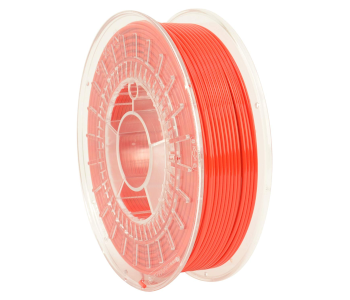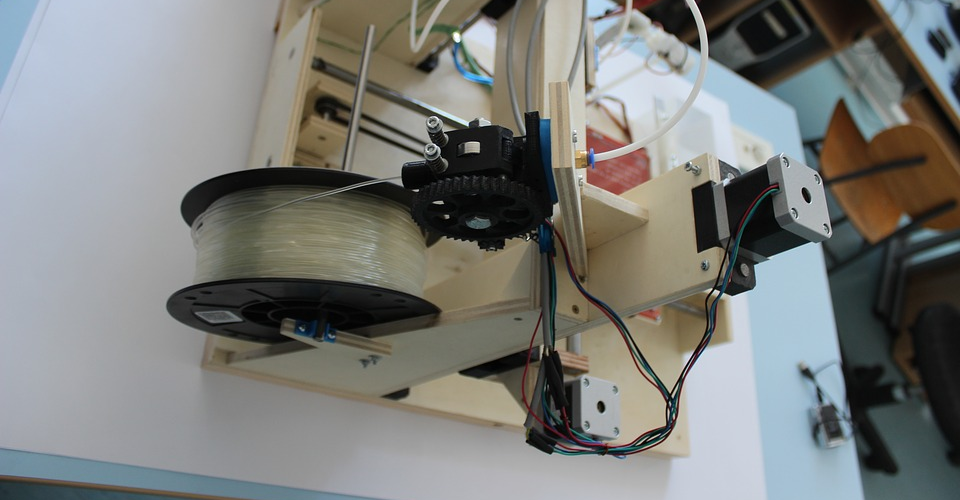What is the Amphora Filament? A Detailed Review and Guide
By now, we’ve already written about quite a lot of filament materials used in 3D printing. There are the standard ABS and PLA, the flexible TPU, the UV-resistant PETG, and the more exotic compound filaments like Wood and Carbon Fiber. Despite how seemingly diverse the selection is, all these filaments were made using a polymer compound that had already been widely used in several industries.
In this article, we put the focus on the Amphora filament: an innovative filament made from a polymer that was specially designed for 3D printing. How does the Amphora filament compare to other 3D printing filaments? Is it just as easy to use or will you need a special FDM printer?
What is Amphora?

What makes Amphora such a unique filament is that it’s not based on a previously existing polymer in the way that PLA and ABS filaments were. Instead, Amphora was created from a polymer that was designed to deliver all the best properties that 3D printing professionals were looking for: heat-resistant, flexible, good impact strength, and produces a smooth finish.
This effort was an undertaking of the American firm Eastman Chemical Company way back in 2013. This was the first of its kind and remains the only custom polymer for 3D printing filaments that is available in the market today.
Nowadays, there are several filament products based on the Amphora polymer from different brands. There’s an Amphora filament in just about any color from colorFabb and Lulzbot. There are even composite filaments with a plastic matrix made from Amphora instead of the usual PLA.
Mainstream acceptance of the Amphora material has been slow to pick up, considering that it’s been on the market for several years now. The price of an Amphora filament is probably the biggest hurdle to its mainstream use, although some users have also expressed difficulty in working with Amphora filaments.
What characteristics make Amphora unique?
When Eastman Chemical came up with the Amphora polymer, they made sure to retain some of the most desirable characteristics of many of the filaments that already existed and eliminate as much of their limitations as possible. The result is vastly superior plastic filament that isn’t just made to withstand the toughest conditions but is also easy to print with.
1. Durable and flexible
If you want a print that is much more durable than PLA, has flexibility comparable to TPU, and is as strong as ABS, then Amphora is the perfect filament. It doesn’t yield to impact quite as readily as TPU but is flexible enough to absorb a good amount of force. It’s certainly not brittle, so an Amphora print is going to be useful beyond being a mere display piece. To top it all off, the layer to layer adhesion of Amphora is superior to many other filaments
2. Doesn’t emit harmful fumes or noxious odors during printing
One of the worst aspects of ABS is the odor that it emits while printing, making it necessary to do your 3D printing in an area with very good ventilation. The Amphora filament has no such issues. According to Eastman, Amphora is a completely styrene-free product, so you can at least rest assured that it has none of the usual harmful emissions. Printing with the Amphora filament is virtually an odorless experience, although it may release microplastics in the air, so it’s still a good idea to have some ventilation.
3. Prints at high temperature
Amphora prints at the high end of the ABS printing temperatures – somewhere around 240 to 260 °C. While Amphora isn’t immune to the usual issues that come with high-temperature 3D printing, like warping and stringing, it also ensures that the resulting print is heat-stable. This means that you can safely leave your finished Amphora print outside or even keep it in your car on a hot day without worrying about the print melting.
4. Chemically resistant
Amphora is not prone to degradation when exposed to most acids, solvents, oils, grease, and basic compounds. It is so chemically resistant that there are no solvent-based finishing methods available for an Amphora print. You’ll have to rely on good old sanding and polishing if you want your Amphora print to have a professional-grade finish.
5. Good dimensional stability
Amphora prints at a high temperature, so you’ll still need to make a few precautions to avoid warping. It’s nothing out of the ordinary – a heated printing bed, a bed adhesion aid, and no cooling on the first few layers. However, Amphora doesn’t warp quite as easily as ABS. It doesn’t require as high of a temperature setting on the heated bed, and you even have the option of turning on the cooling fan by the 3rd or 5th layer of the print.
6. Better bridging performance
The superior strength of Amphora, plus the fact that you can turn on a cooling fan in the middle of the print, make this filament one of the best in terms of bridging performance. If you need to print overhanging features, Amphora can go as far as 15 centimeters without collapsing. This is a hard limit, though, and we recommend restricting your overhanging features to about 8 centimeters before you start adding support structures.
7. FDA-approved for food contact
Since Amphora releases no harmful compounds, it has been approved by the FDA as safe for food contact applications. In spite of this pronouncement, we still don’t recommend using any 3D printed container for long-term or repeated food storage because 3D printing (especially using FDM) naturally produces a surface finish full of microscopic gaps. These gaps are prime spots for bacterial growth. If you intend to use your Amphora print for any sort of food storage, make sure to do some finishing to make the surface of the print as smooth as possible.
8. Expensive
While Amphora isn’t the most expensive filament available today, it is still expensive enough compared to standard PLA or ABS to give most buyers pause. You can expect to spend around $50 to $60 for a 1-kilogram spool of Amphora filament. The price isn’t bad for the quality that you get with an Amphora filament, but it’s not likely to replace your staple ABS or PLA filament anytime soon.
Tips for printing with Amphora filament
| Material | Amphora |
| Properties | Emission-free printing, good flexibility and durability, heat-stable, chemically stable, safe for food contact, prone to warping |
| Applications | Food containers, functional and protective parts, outdoor items, household fixtures |
| Printing temperature | 250 to 270 °C |
| Printing speed | 30 to 60 mm/s |
| Bed temperature | 70 °C |
| Cooling | No cooling for first layers, 100% cooling from third layer onwards |
1. Use bed adhesion
Although Amphora doesn’t warp as heavily as ABS, rapid cooling from its high printing temperature can still result in significant shrinkage of the print. This problem will be further magnified if you’re printing large models, as the shrinkage will generate much more thermal stress. For this reason, it is recommended to print with Amphora on a heated bed with some sort of adhesion aid.
Make sure your build plate is grease-free by wiping it down with some alcohol before applying any adhesion aid. For a glass build plate, a thin application of glue stick should do the trick. If you are using a heated aluminum build plate, then a layer of Kapton tape is much more suitable.
2. Print with a skirt
An easy to get the first layer of your Amphora print is to print with a skirt. A skirt is merely a thin layer of filament that is printed right on the build plate just outside of the actual model – a sort of “border” if you will. Not only does the skirt slow down the cooling of the first layer of the print by forming a barrier against the colder atmosphere, but it also primes the extruder to ensure that there is optimal filament flow through the nozzle.
3. Sanding and polishing are the best finishing methods
Amphora is not soluble in any of the commonly found solvents, so getting that smooth finish out of your Amphora prints will involve a whole lot of elbow grease. The good news is that Amphora prints, by default, come out with a nice shiny luster. However, you will still need to get rid of layer lines if you want your finished print to look perfectly smooth.
We recommend starting with a 120-grit sandpaper and gradually moving your way up to 320-grit, making sure that you are satisfied with the results at each step. Amphora is very heat-stable, so there shouldn’t be any danger of the print deforming due to excessive friction. The color of the print will almost certainly become dull after sanding as it loses its luster, but an application of a polishing compound should help bring back the vibrancy of your print.
Final thoughts
In the early days of 3D printing, filament brands merely appropriated thermoplastics that have already seen heavy use in other industries and turned them into filaments. While this proved to be a successful venture, each one of these filament materials had limitations – they were either too brittle, hard to work with, or required some special 3D printing component.
It’s heartening to see that the 3D printing industry has become large and commercially viable enough to warrant the development of a special polymer. In many ways, the Amphora polymer is a superior version of many of the polymers that were used (and are still being used) by the 3D printing community. It’s still not perfect, though, so we’re eagerly looking forward to the next specially formulated polymer that will be introduced to 3D printing. Fingers crossed, it’s going to be even better than the Amphora.





